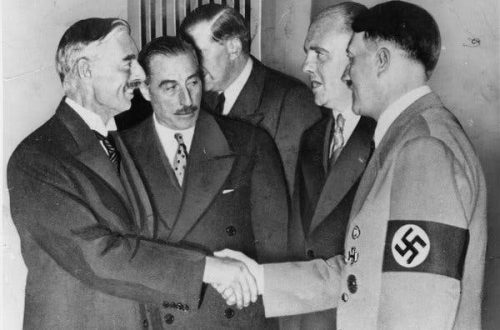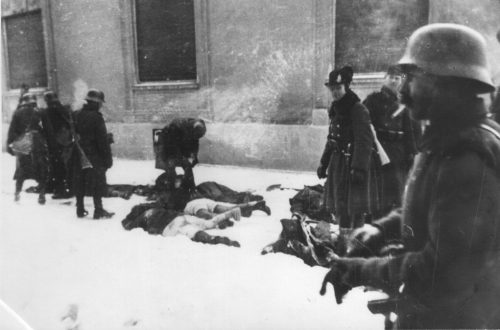Guest post by Andrew Murphy
This month is the 100th anniversary of the birth of former president Ronald Reagan. Like most politicians who held strong beliefs, Reagan during his lifetime generated much love and much hate across the ideological divide. Since his death in 2004, conservatives have been doing there utmost to turn Reagan into a secular saint of American conservatism. There is actually a movement afloat to add Reagan to Mt. Rushmore. However conservatives seem to have air-brushed from memory that despite his ideological beliefs, Reagan was a pragmatist and the man is actually quite different then the myth.
Consider the some of the issues Reagan faced as president:
Taxes: If you listen to conservatives today, they will wax on about how Reagan cut taxes. The real Reagan record on taxes is far more complex. The largest peacetime tax increase in US history was in 1982 with the Tax Equity and Fiscal Responsbility Act (TEFRA) pdf. Former Reagan economist Bruce Bartlett writes that TEFRA raised taxes by as much as one percent of the gross domestic product of the USA. Some try to argue that Reagan agreed to the tax increases only if the Democratic Congress would cut spending. Yet when the House passed TEFRA, it actually included more tax cuts. It was the Senate Republicans who added the tax increases.
The same year Reagan imposed a five cent tax increase on gasoline. In 1983 Reagan increased Social Security payroll taxes by $156 billion dollars over a seven-year period. In 1986 with the Tax Reform Act, Reagan raised the tax rates on the bottom rate of income tax filers from 11 percent to 15 percent. Former Republican senator Alan Simpson told a panel on public radio this month:
“Ronald Reagan raised tax 11 times in his administration. I was here. I was here. I knew him. Better than anybody in this room. He was a dear friend and a total realist as to politics.”
Cold War: It is amazing what over 20 years can do. Hardcore conservatives felt betrayed by Reagan as he tried to make peace with Mikhail Gorbachev. Howard Phillips, the head of the Conservative Caucus in 1987, even went so far as to say that Reagan was “a useful idiot for Kremlin propaganda.” William F. Buckley accused him of “utopianism” and the Wall Street Journal editorial page denounced his meeting with Gorbachev at Reykjavik, Iceland, in 1987.
Reagan during his first term took a very hard line with the Soviets. When Gorbachev came to power, there were no signs from the Reagan administration that they were going to treat him any differently. It was only after Margaret Thatcher met Gorbachev and told Reagan that the new Soviet premier was a man they could do business with that Reagan began to put peace feelers out to Gorbachev.
Reagan ignored his right wing and listened to Thatcher. Which is why it is so interesting to listen to rightwing activists speak of Reagan “winning” the Cold War. He certainly played his part, but it was in spite of them. Besides, as the great Cold War diplomat George Kennan wrote in 1992:
The suggestion that any American administration had the power to influence decisively the course of a tremendous domestic political upheaval in another great country on another side of the globe is intrinsically silly and childish. No great county has that sort of influence on the internal developments of another one.
Social issues: While Reagan gave great speeches endearing himself to the Christian Right, as governor of California he legalized abortion and signed into law California’s first no-fault divorce. His wife Nancy consulted astrologers in the White House. A silly, superstitious thing to do but according to the Old Testament, astrology is a capital offense (Isaiah 47:13-14). I always found it odd that the same Moral Majority leaders who quoted the Old Testament to condemn homosexuality in the 1980s never seemed to find the will to do the same with the First Family for consulting with stargazers.
Reagan demonstrated pragmatism on gun control by supporting the Brady Bill. In 1986 he approved amnesty for three million illegal immigrants. Reagan’s position on amnesty for illegals puts him way outside the Tea Party and Minutemen Project circle.
Government spending: Despite his anti-government rhetoric and a Republican Senate from 1981-1985, Reagan did little or nothing to curtail the size and scope of government. Under his watch, the Veteran’s Administration was promoted to the cabinet level and by January 1989, there were 230,000 more federal employees then before Reagan came into office. Spending on agencies like the Department of Education and Energy both doubled under Reagan. But when it comes to spending both the Right and the Left are wrong about Reagan. The Right claims that it was all the Democrats’ fault for spending money which caused the huge deficits in the 1980s. And the Left wrongly claims that Reagan starved the government of tax revenue with his tax cuts– which of course doesn’t explain all the tax increases Reagan enacted during the same period. The reality was as Reagan’s former budget director, David Stockman, detailed in his interview with William Greider in the Atlantic, the Reagan White House and Republicans in Congress were just as committed to government programs as their Democratic counterparts. They just had different priorities on where to spend the money. Stockman gave an example to Greider:
The counter-offensive against the cut was led by Commerce Secretary Malcolm Baldrige and U.S. Trade Representative William Brock, who argued eloquently before the budget working group for a partial restoration of [Export-Import Bank] funds. By Stockman’s account, the two “fought, argued, pounded the table,” and the meeting seemed headed for deadlock. “I sort of innocently asked, well, isn’t there a terrible political spin on this? It’s my impression that most of the money goes to a handful of big corporations, and if we are ever caught not cutting this while we’re biting deeply into the social programs, we’re going to have big problems.” Stockman asked if anyone at the table had any relevant data. Deputy Secretary of the Treasury Tim McNamar thereupon produced a list of Ex-Im’s major beneficiaries (a list that Stockman had given him before the meeting). “So then I went into this demagogic tirade about how in the world can I cut food stamps and social services and CETA jobs and EDA jobs and you’re going to tell me you can’t give up one penny for Boeing?
Reagan did not put a high priority on ideological conformity. He always campaigned for Republicans, even those he did not agree with. After all, he picked George H Bush– the man who called his economic plan “voodoo economics”– to be his running mate in 1980. When Reagan ran against Gerald Ford in the 1976 Republican presidential primaries, he chose the late Senator Richard Schweiker to be his running mate if he won the nomination. Schweiker was a Rockefeller Republican.
And when conservative Republican John Ashbrook ran a protest campaign in 1972 against Richard Nixon, decrying how Nixon had imposed wage and price controls, opened Red China, supported affirmative action, created new federal agencies like OSHA and the EPA, Reagan campaigned for Nixon, not Ashbrook. If Reagan was truly the inflexible ideologue that the Sarah Palin and Tea Party movement claim, he would have support Ashbrook in 1972 or better yet, would have run against Nixon himself.
If one were to place Reagan’s record on abortion, taxes, illegal immigration and government spending before Glenn Beck or Sarah Palin, and black out his name, they would denounce him as a RINO (Republican In Name Only) or worse. This says volumes about how far the conservative movement has moved to the right of Reagan since 1989 and it demonstrates the power of political myths.


